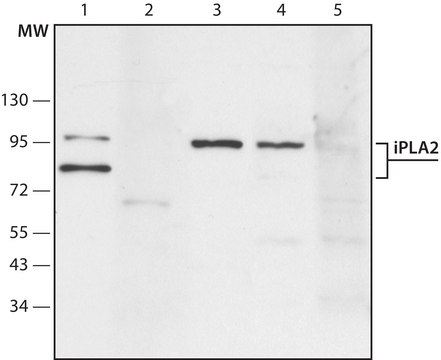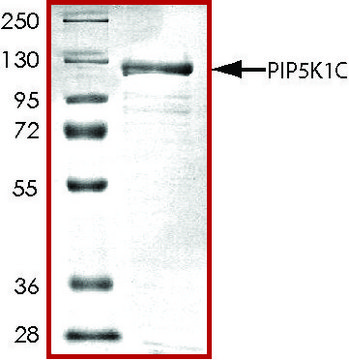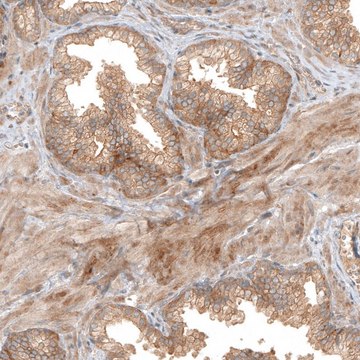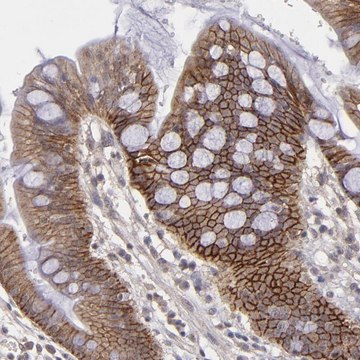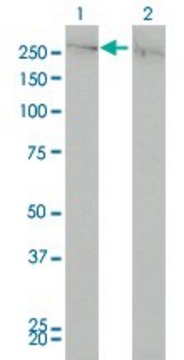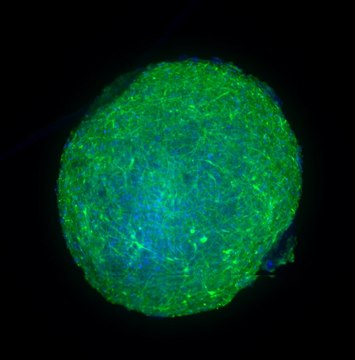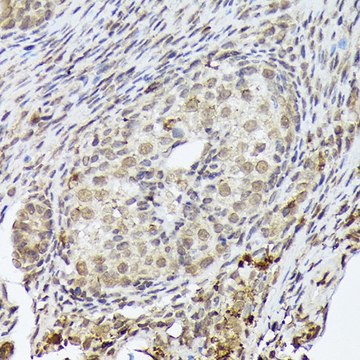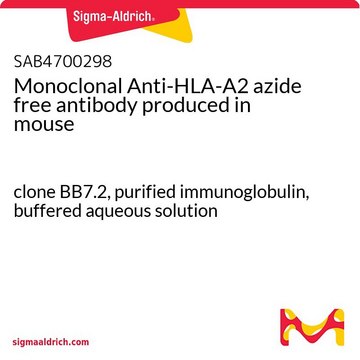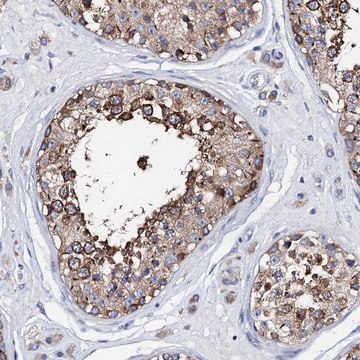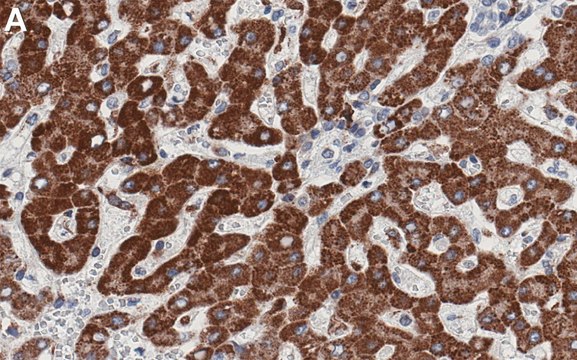SAB4200130
Anti-Phospholipase A2 (iPLA2) (C-terminal region) antibody produced in rabbit

~1.5 mg/mL, affinity isolated antibody
别名:
Anti-CaI-PLA2, Anti-INAD1, Anti-IPLA2-VIA, Anti-PARK14, Anti-PLA2, Anti-PLA2G6, Anti-PNPLA9, Anti-Phospholipase A2, group VI (cytosolic, calcium-independent), GVI
About This Item
推荐产品
生物来源
rabbit
偶联物
unconjugated
抗体形式
affinity isolated antibody
抗体产品类型
primary antibodies
克隆
polyclonal
表单
buffered aqueous solution
分子量
antigen ~85 kDa
antigen ~95 kDa
种属反应性
mouse, human, rat
包装
antibody small pack of 25 μL
增强验证
recombinant expression
Learn more about Antibody Enhanced Validation
浓度
~1.5 mg/mL
技术
western blot: 1-2 μg/mL using extract of HEK-293T cells overexpressing human iPLA2, and 1-2 mg/mL using rat kidney extract (S1 fraction).
western blot: 1-2 μg/mL using rat kidney extract (S1 fraction)
UniProt登记号
运输
dry ice
储存温度
−20°C
靶向翻译后修饰
unmodified
基因信息
human ... PLA2G6(8398)
一般描述
特异性
应用
生化/生理作用
外形
储存及稳定性
免责声明
未找到合适的产品?
试试我们的产品选型工具.
储存分类代码
10 - Combustible liquids
闪点(°F)
Not applicable
闪点(°C)
Not applicable
法规信息
我们的科学家团队拥有各种研究领域经验,包括生命科学、材料科学、化学合成、色谱、分析及许多其他领域.
联系技术服务部门